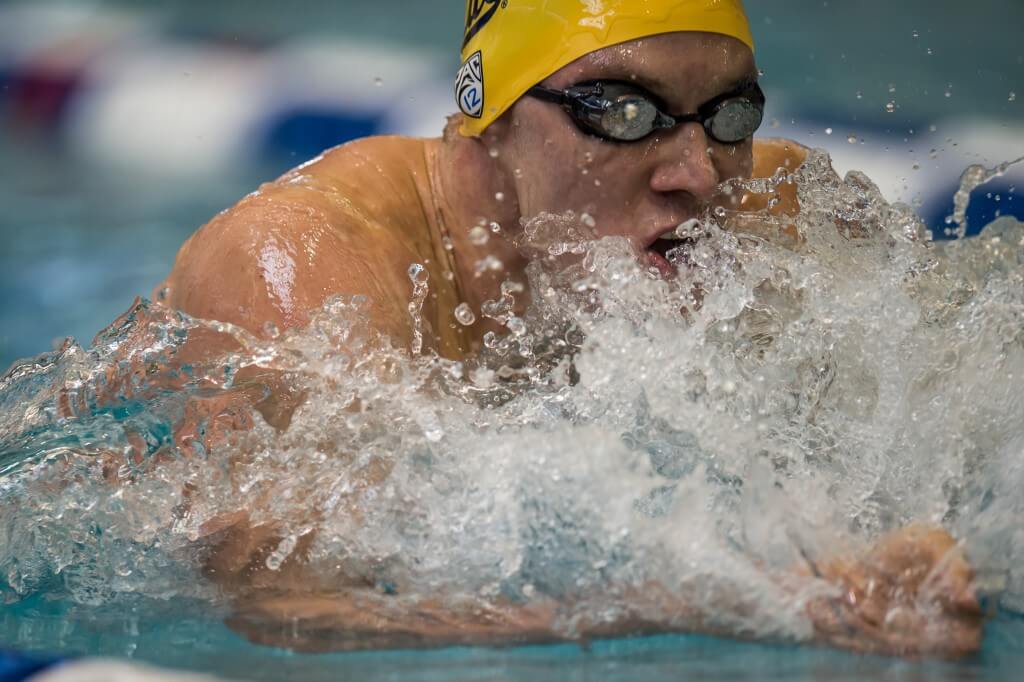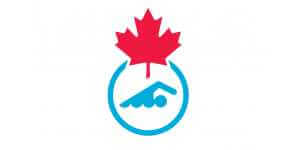Why Swim At Another Country’s Trials?

by Rick Madge
Ryan Murphy of the US is just off an incredible NCAA Div I championship held just a few weeks ago, where he dominated the 100 and 200 yard backstroke events, with NCAA records in both. But that meet is held in a 25 yard pool, and that’s a huge difference from a 50 metre pool. Especially for someone like Ryan who does over half of his NCAA races underwater. He knew his turns were sharp, but he knew he needed more exposure to more long course races.
That’s why Ryan was at the Long Course Orlando Grand Prix in early March, but he wasn’t pleased with how he swam those races. So for Ryan, the Canadian Trials are at the right time. It’s another chance to get use to long course racing, and another chance to hit those race strategies. Quite a few other top international swimmers, especially those who swim NCAA are also here for the same reasons.
One of the first things Ryan noticed here was how serious and emotional these Trials are for so many swimmers, and he said that really helped him focus. This was really brought home to him when his NCAA Cal teammate Jeremie Dezwirek won the 200 Back but missed the Olympic Qualifying time by 0.09 seconds. Ryan said that was really tough to watch, and it made him realize that those extra 1/100th of a second count.
And it certainly worked. Here’s how he did in the two meets:
Orlando Grand Prix
200 Free: 1:51.41
100 Back: 53.47
200 Back 1:57.23
Canadian Olympic Trials
200 Free: 1:49.70
100 Back: 52.57
200 Back: 1:54.94
In fact, it worked so well that Ryan PB’d both his 100 and 200 Back swims and did the 4th and 2nd fastest time in the world this year, respectively. He also set a Canadian Open record in the 100 Back. These swims were much better than he thought they’d be at this point.
For the 13 swimmers from New Zealand though, this meet is just as serious and emotional as it is for Canadian swimmers. Swimming New Zealand has selected the Canadian Trials as their 2nd official trials for their swimmers to meet the Olympic Qualifying time. The difficulty for them, however, is that they can’t compete in the A Finals, and so their big races have to be in the B Finals where they face slower Canadian swimmers, and hopefully some other fast foreigners.
It’s worked for 2 NZ swimmers so far. Corey Main qualified in the 100 Back with a heat time of 54.27, just under the Olympic Qualifying time of 54.36. Interestingly, he then scratched out of the finals when he could have faced off against Ryan Murphy.
Matthew Hutchins also qualified in the 400 Freestyle with a heat time of 3:49.84, well under the OQ time of 3:50.44.
Clearly, this meet is useful for top non-Canadians, and it can’t help but increase the overall speed of the meet , helping Canadian swimmers better understand how fast the international scene is.





In short: because it’s not the US
I agree that it is a useful opportunity for international swimmers to gain long course experience, and / or to make their own country’s cut. However, I do not believe that those swimmers should be taking away 4 valuable B final spots from young Canadian swimmers who could benefit greatly from that experience. Perhaps a separate international final would allow non- Canadian swimmers to race against each other without taking away valuable top level national experience for Canada’s own.